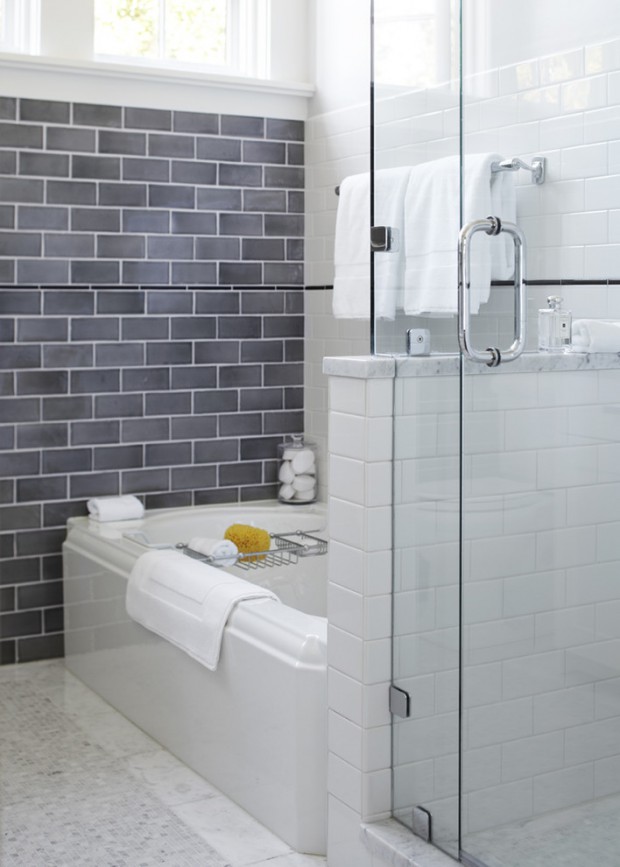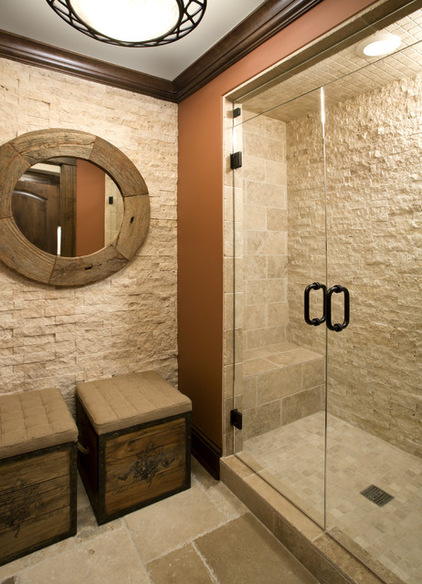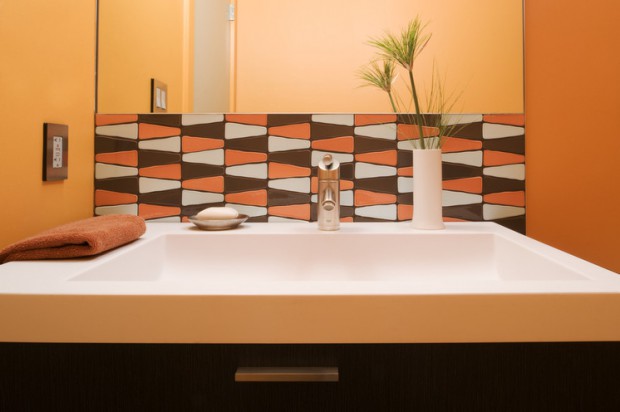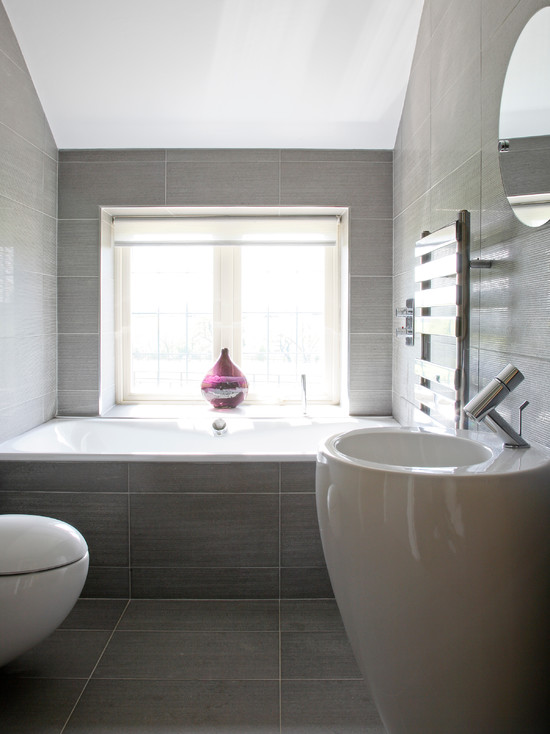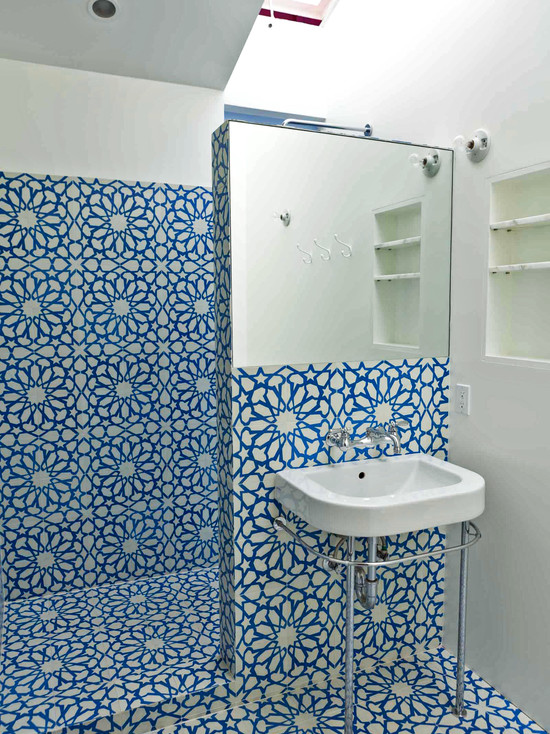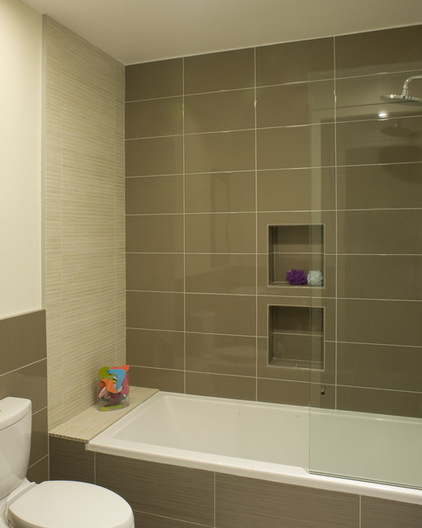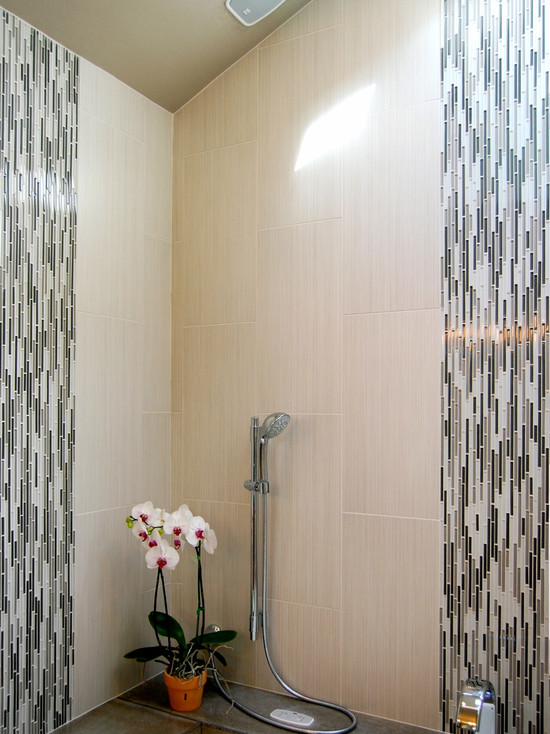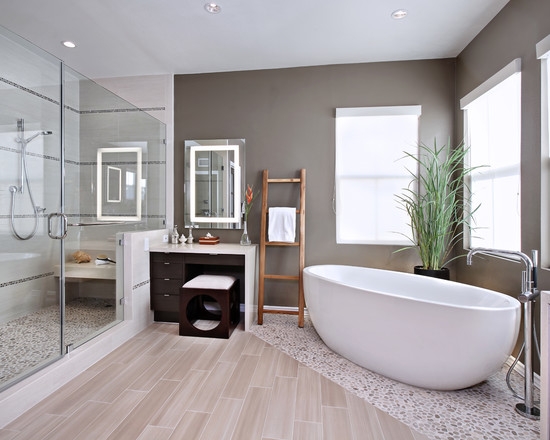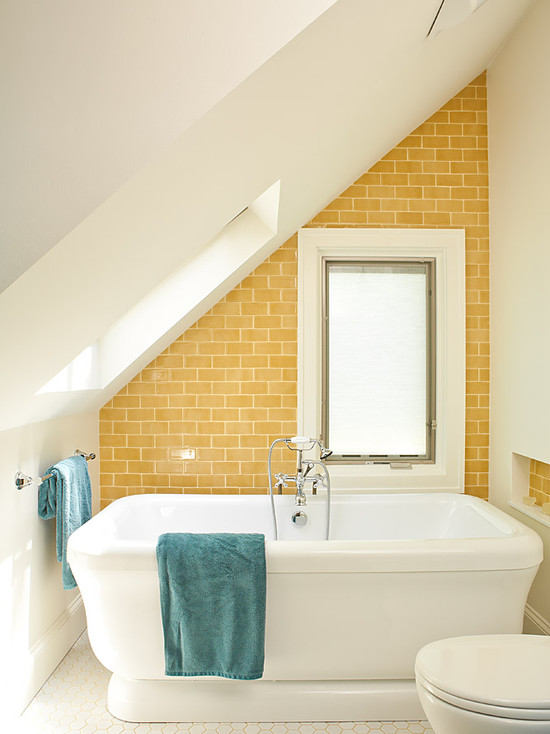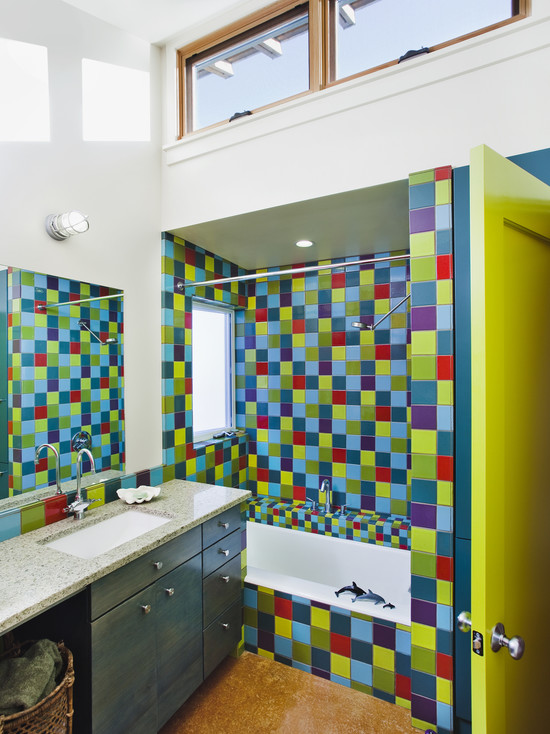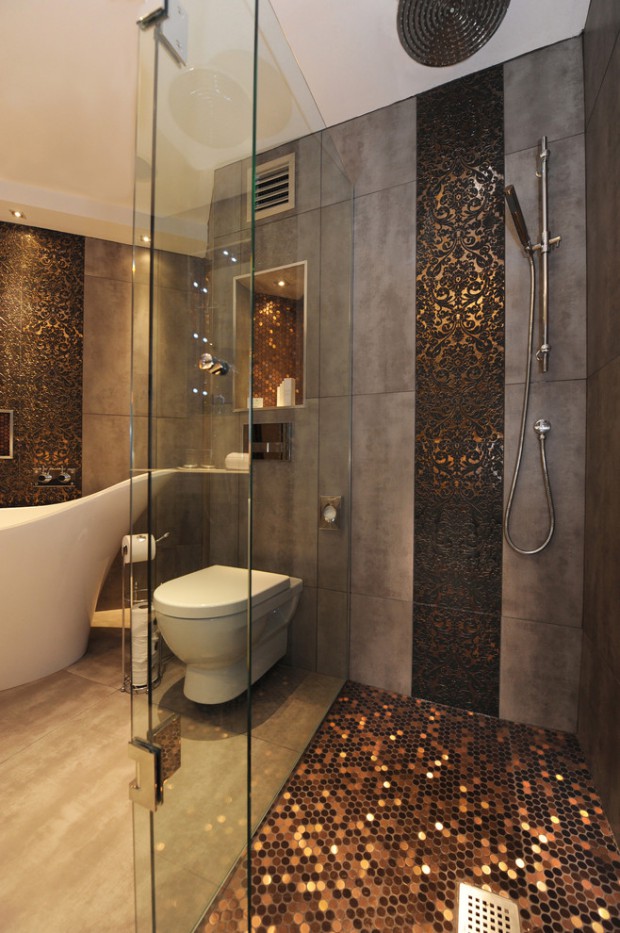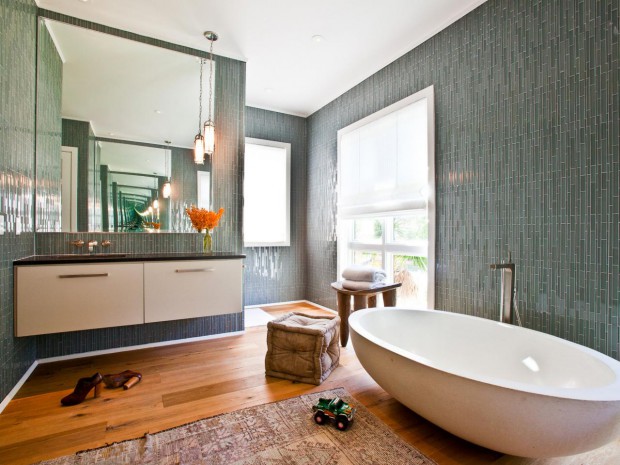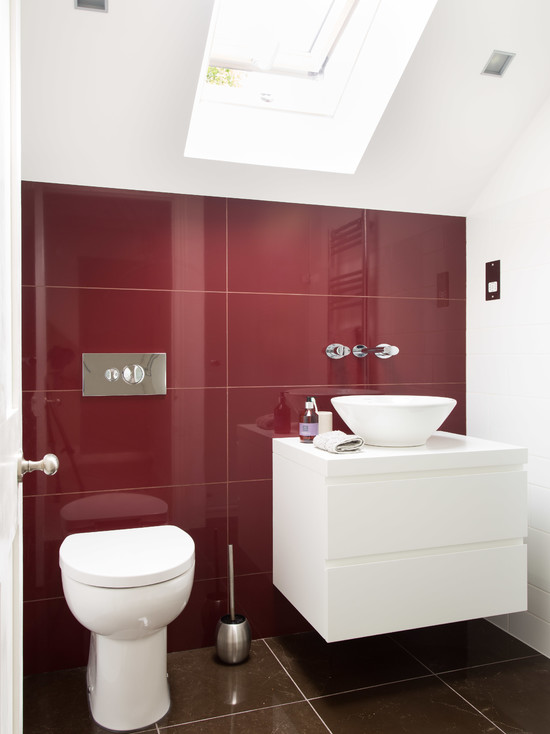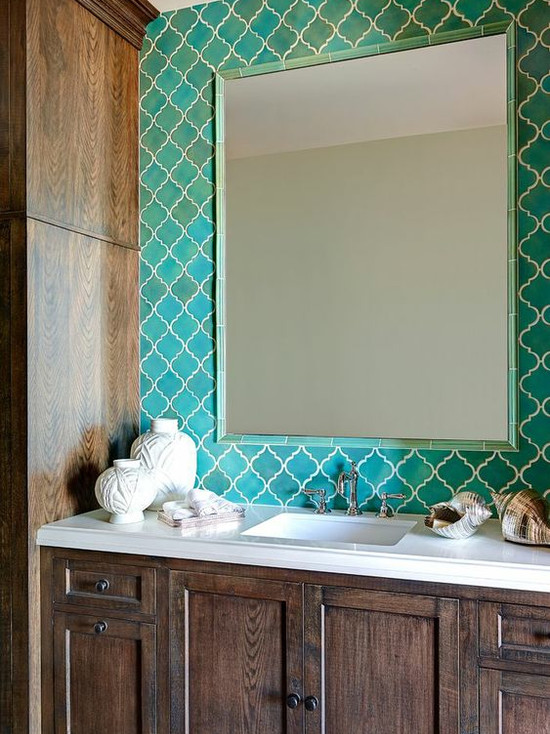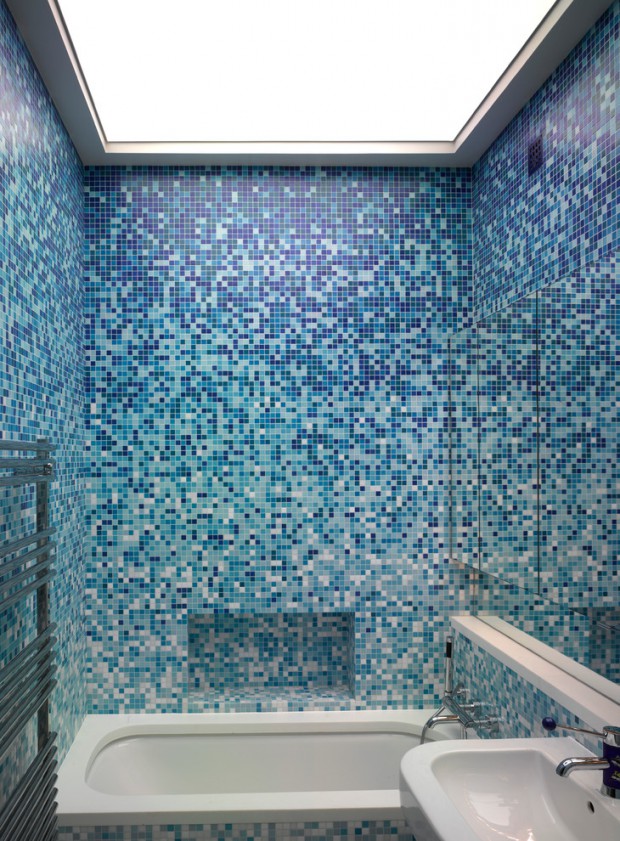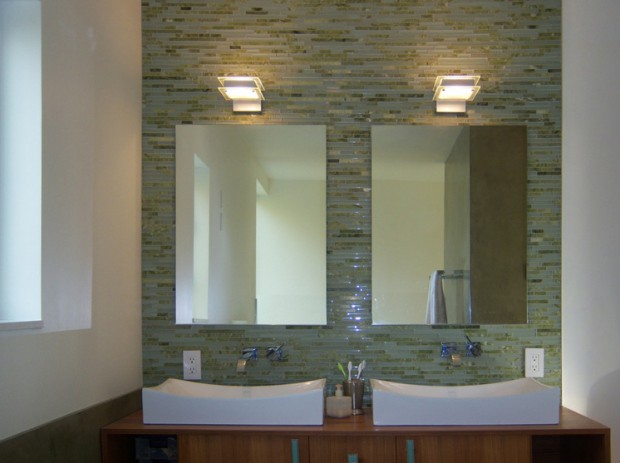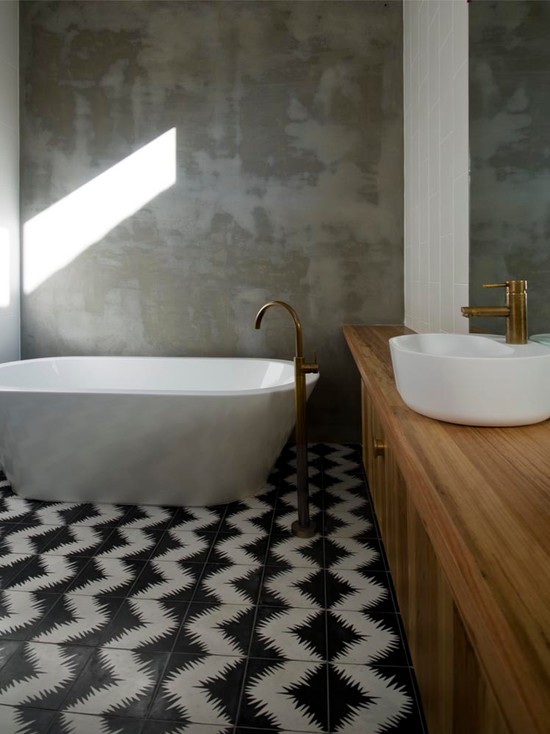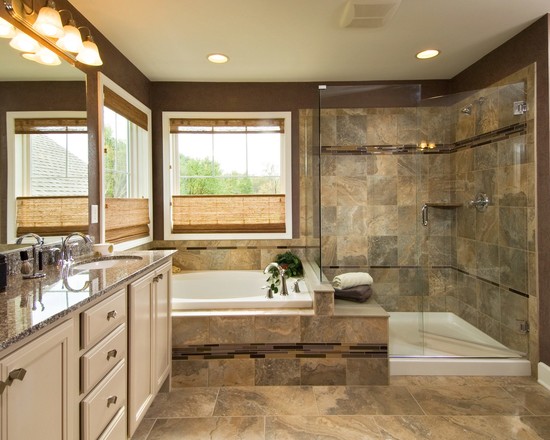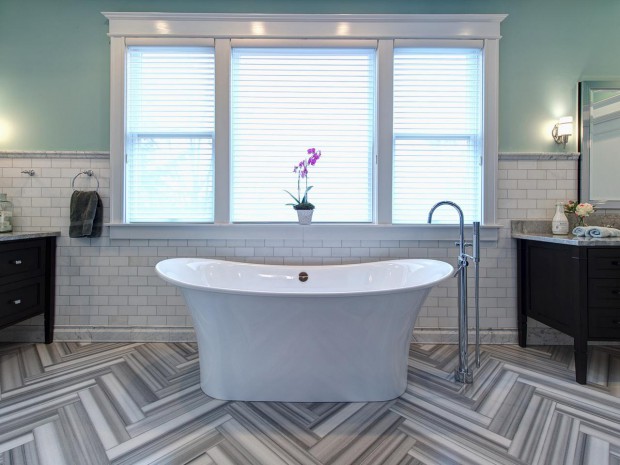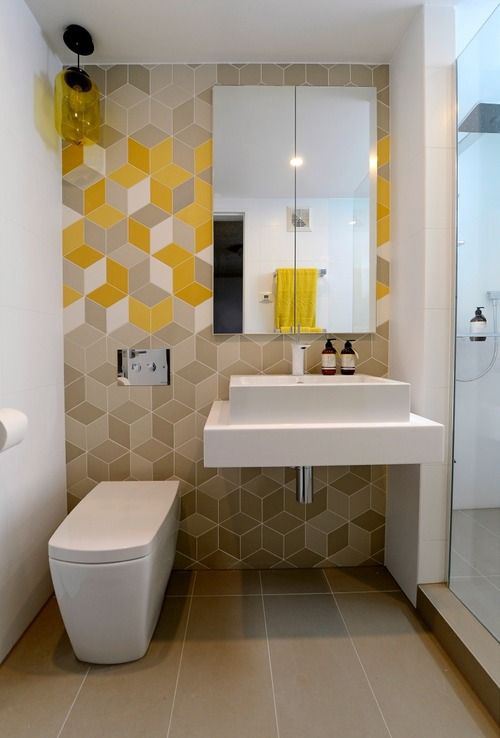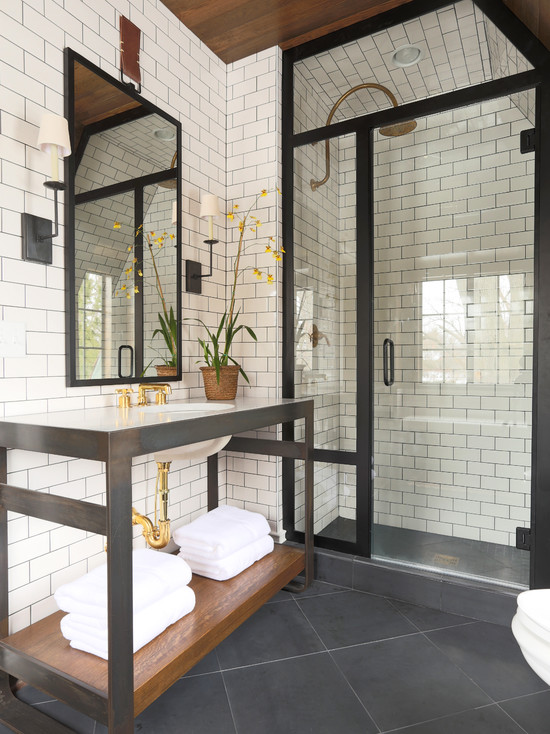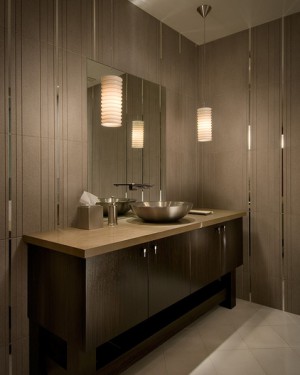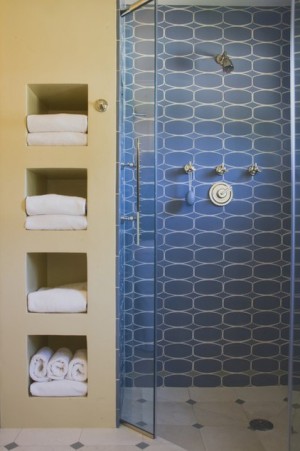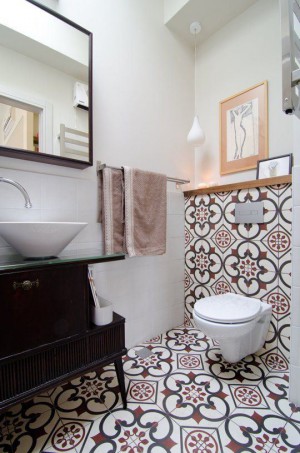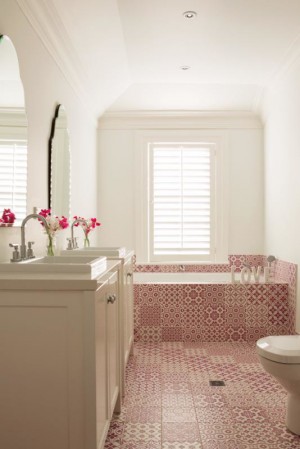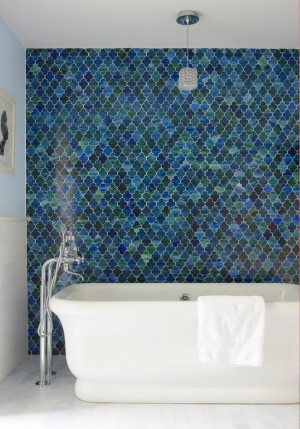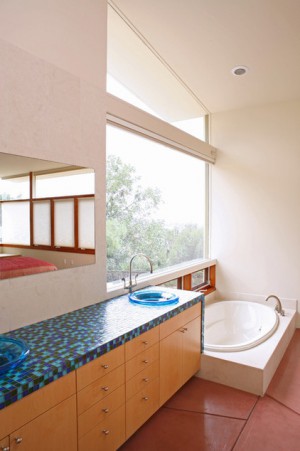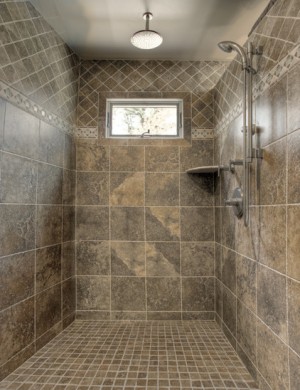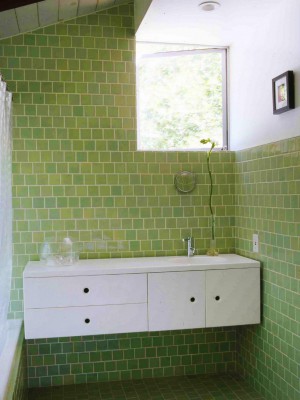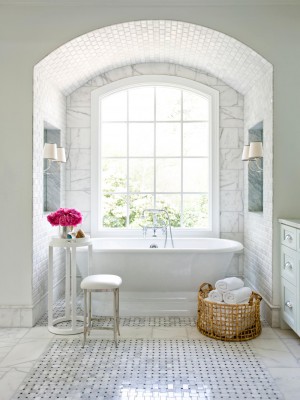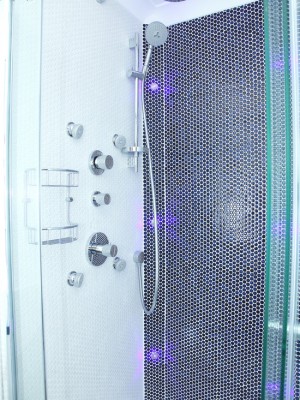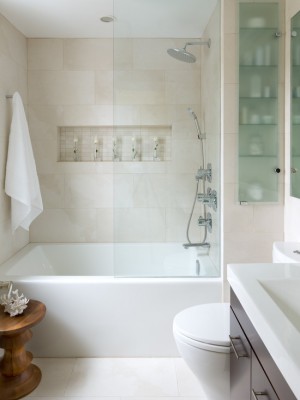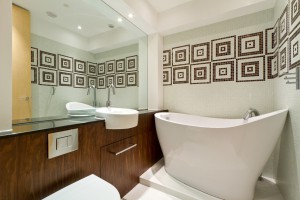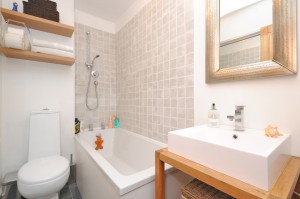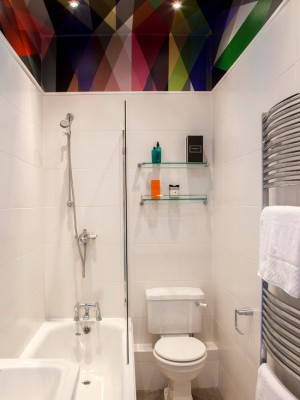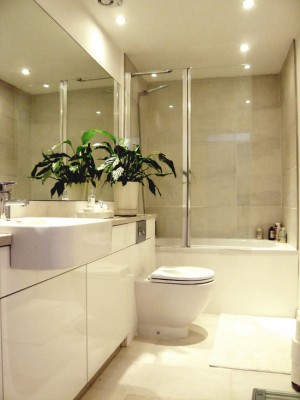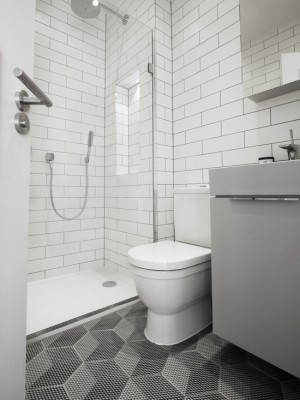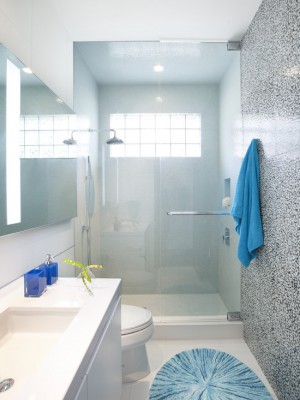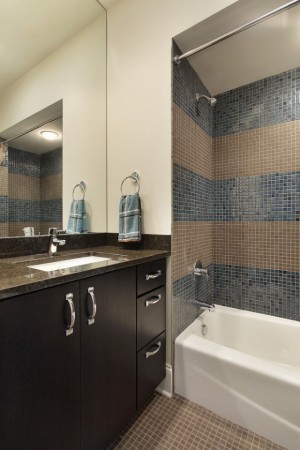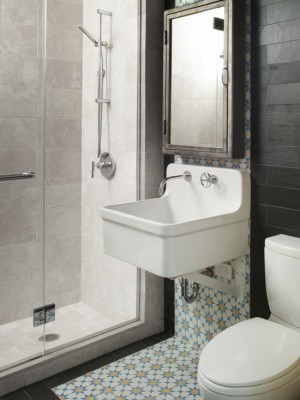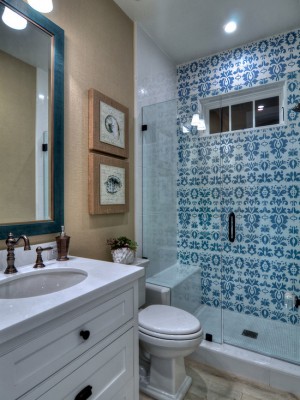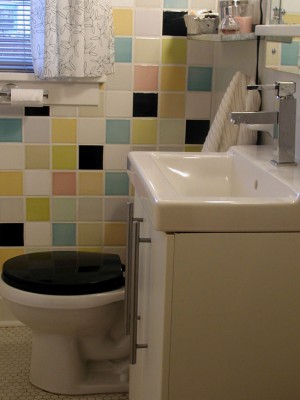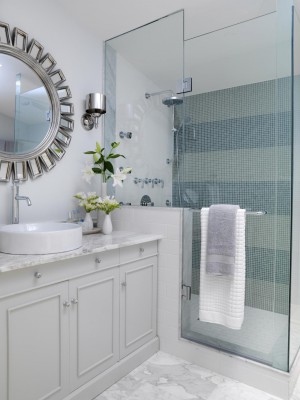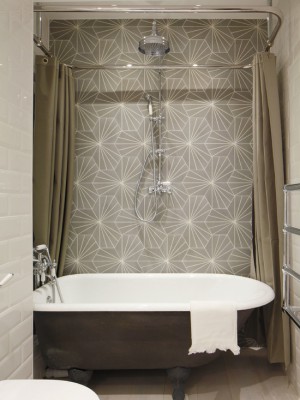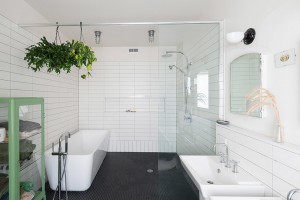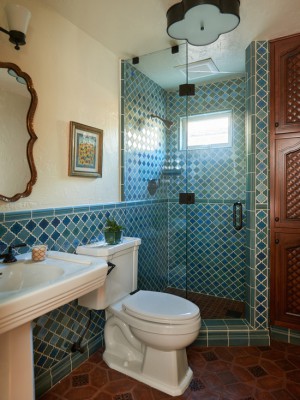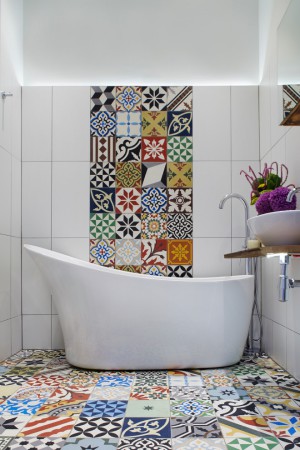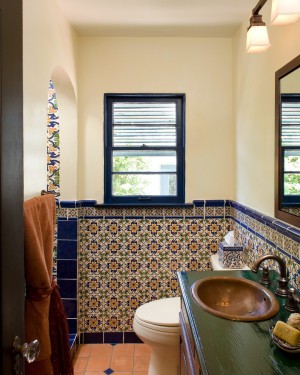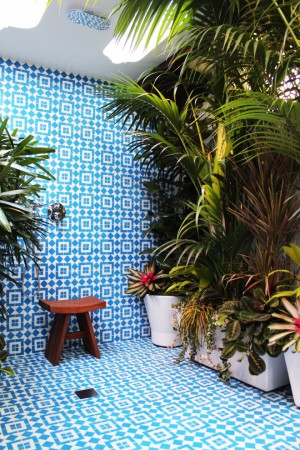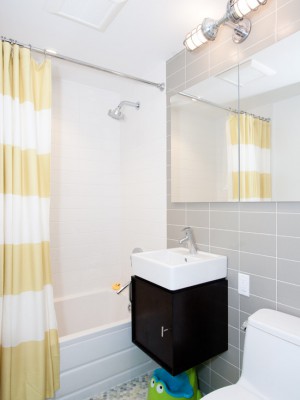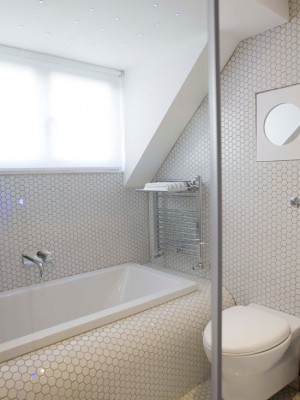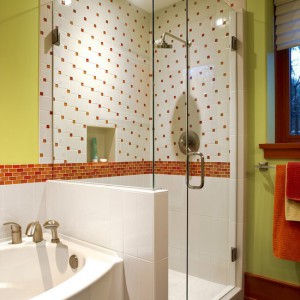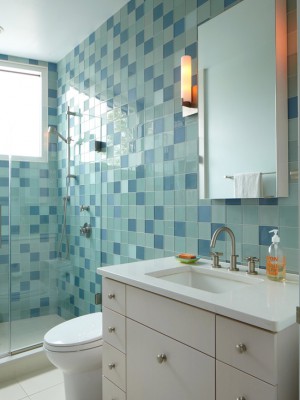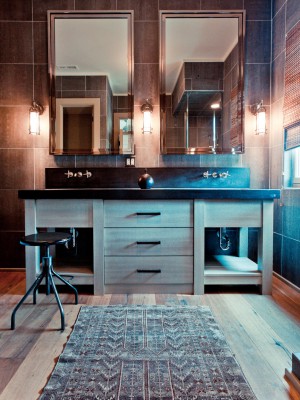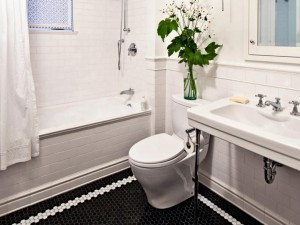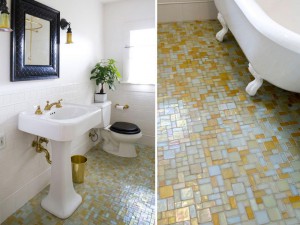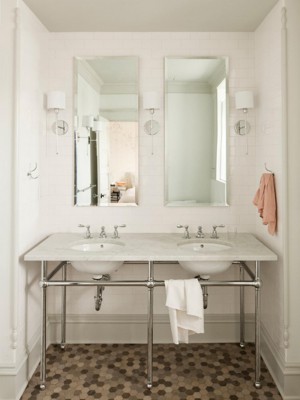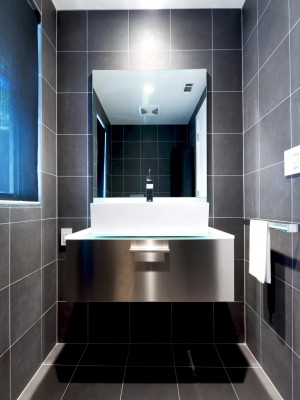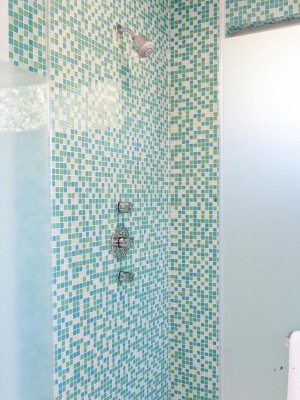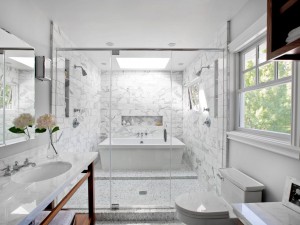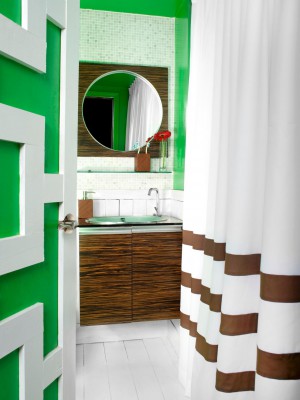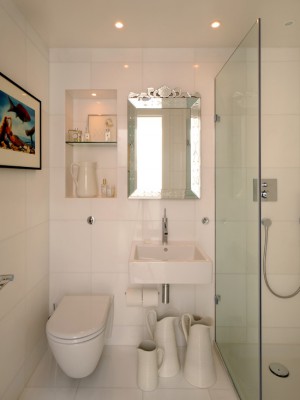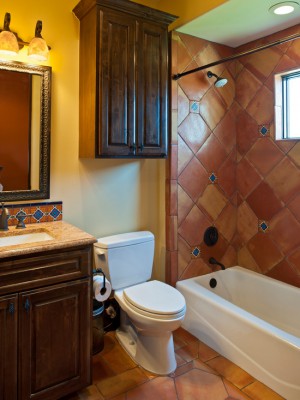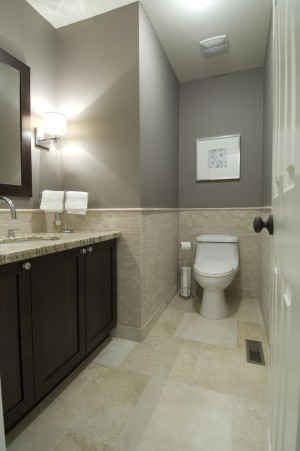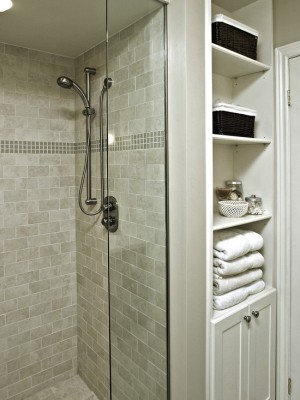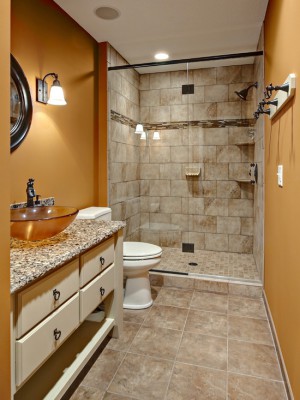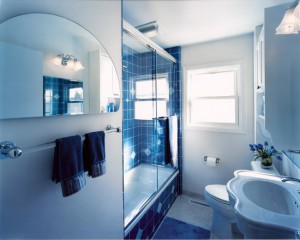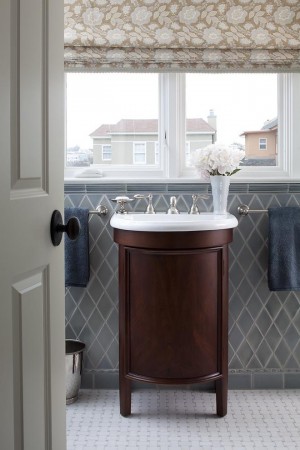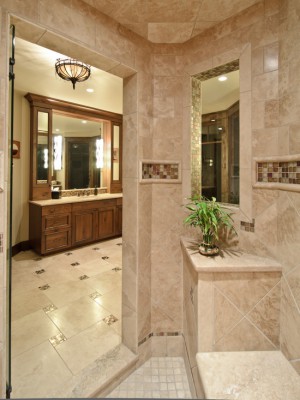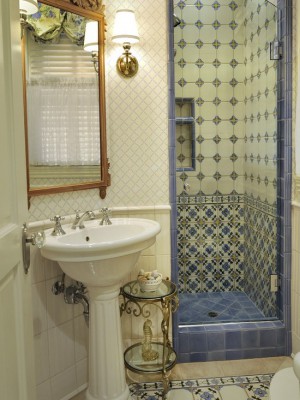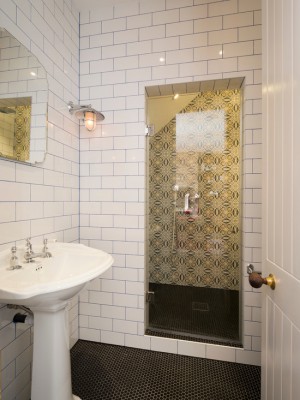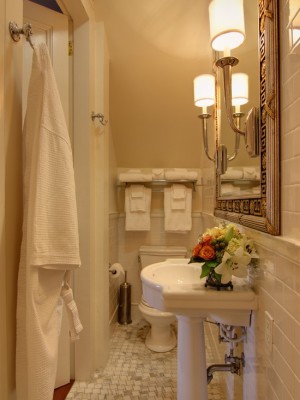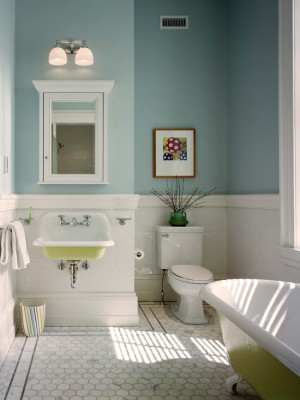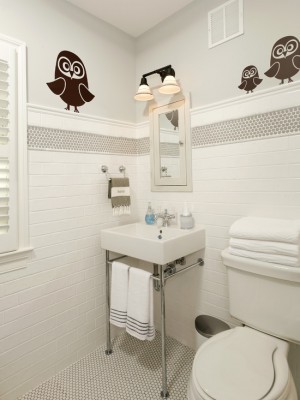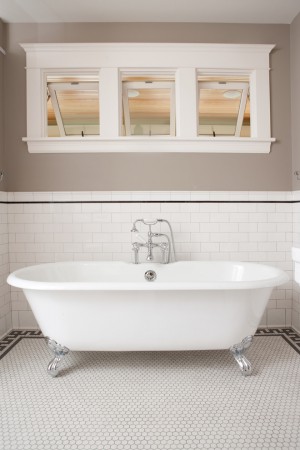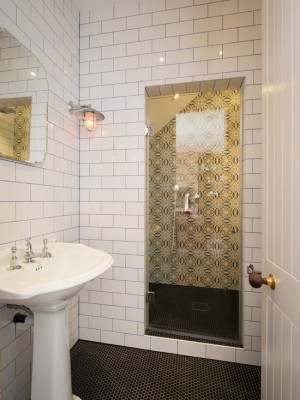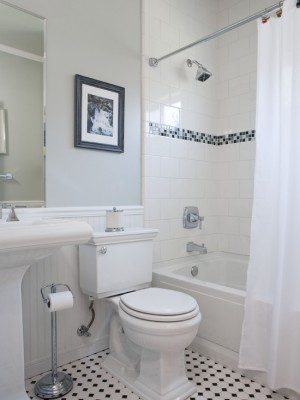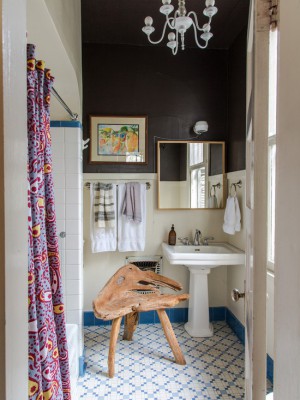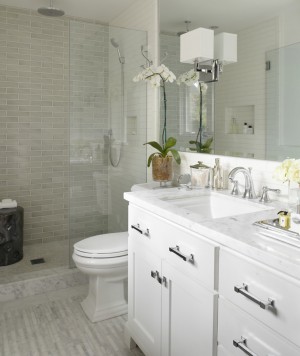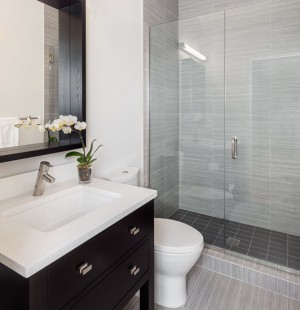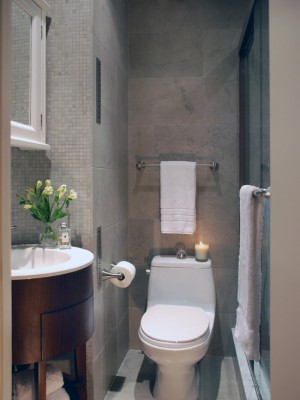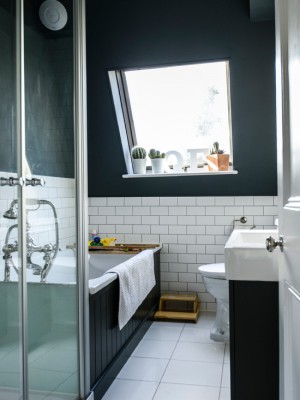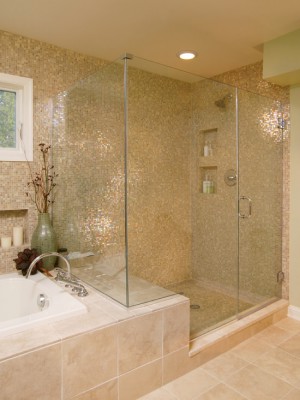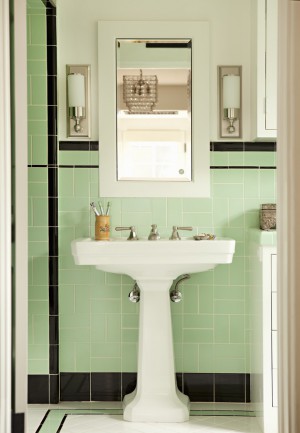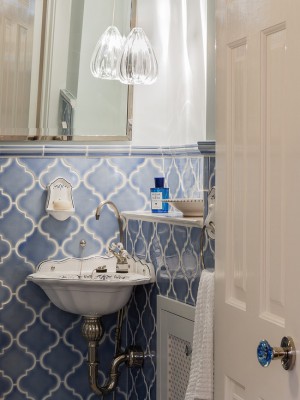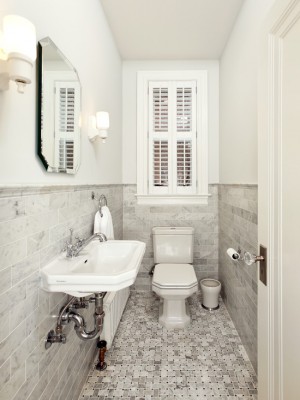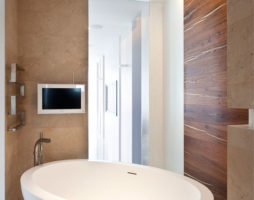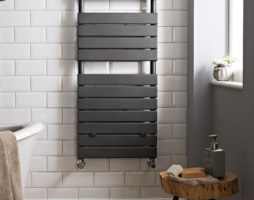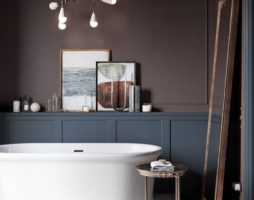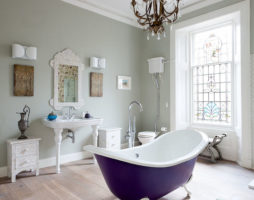How to correctly and beautifully lay out the tiles in the bathroom worries many owners of private properties and apartments who are forced to deal with repairs. A large list of materials combined with the latest technological developments make this procedure easier for professionals, while at the same time complicating it for an inexperienced worker.
How is the tile selected and what is taken into account? What are the nuances when laying tiles in the bathroom? How can you decorate a room in such a way as to use its area as rationally as possible? We bring to your attention one of the common ways of facing the bathroom - the use of ceramic tiles.
How to choose material?
It has already been said earlier that ceramic tiles are the most famous material for finishing the bathroom. There are quite specific requirements for the bathroom, therefore, before laying the tiles in the bathroom, it is necessary to choose the material for the cladding as rationally as possible.. To do this, pay attention to its technical indicators:
- level of moisture absorption;
- the degree of resistance to the influence of cleaning chemicals;
- resistance to mechanical stress;
- resistance to high temperature and vaporization;
- bathroom floor tiles must be resistant to abrasion, bending and abrasive materials.
When choosing a material, it is necessary to focus, first of all, on the quality of the tile. Ceramics, according to existing standards, is of three types, which are marked with a separate color tone. Tiles of the first grade are marked with red markings. This is a high quality and durable tile. Ceramics of the second grade may contain up to 5% rejects. It is marked with blue or blue markings. The third grade is marked with a green marking.
Ceramic tiles are divided according to the stability class. There are five of them, they mark the resistance class with the help of Roman numerals. For a living room, it is recommended to use tiles with a wear resistance of no more than class III; for a bathroom, class I tiles can be used. Since tiling a bath is quite difficult, you need to correctly determine the amount of material - it is better to buy tiles with a margin of about 15% to adjust the material. Not the last place when buying a tile is given to the design of the finish - after all, everyone wants the bathroom cover to be functional, comfortable, and also beautiful. A large selection of finishing materials is a guarantee that you will very easily choose your personal cladding method.
back to index ↑Reason for fame
Ceramic tile is the most popular material for bathroom cladding.It has excellent performance, and this, given the characteristics of this room, where there is high humidity and a temperature difference, is extremely important. Ceramic tile is different:
- high strength and resistance to abrasion - it is used both for floor and wall cladding;
- resistance to moisture;
- long service life; good hygienic indicators: pollution does not remain on the tile, it is easy and convenient to care for it;
- decor.
Manufacturers today present a fairly extensive range of tiles of various shapes, textures and colors, so the bathroom tile decoration can be made quite original.
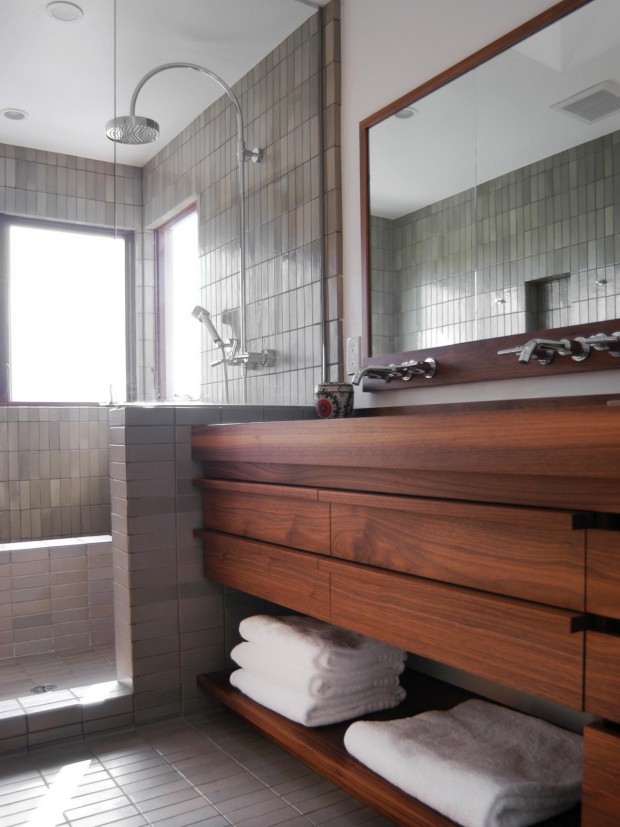
an example of the layout of masonry vertically on the walls and horizontally on the floor and partition
What to consider when choosing a tile?
Laying tiles can be done in different ways, but first you need to make measurements, calculate the amount of material. Before laying out the tiles in the bathroom, pay special attention to measurements so that there is enough material. The tile should be chosen based on the features of the planned design of the room, its design. For example, if the room has low ceilings, choose a tall rectangular tile and lay it straight. Thus, you visually increase the height of the walls.
You should think about what size you want to lay the tiles. This is determined depending on the characteristics of the room: large tiles are chosen if the room is spacious, small if the room is small or medium.
A significant place is given to the color of the finish: often the bathroom is finished in a light tone, for example, in gray or ivory, almond. Therefore, the tile must be chosen in the same tone. Based on the design idea, you can choose tiles of different textures. This will give you the opportunity to show your own extraordinary approach to the design of your bathroom.
It must be taken into account that the building material can visually make the room larger or smaller. For example, if you are planning to make the bathroom wider, take small and cool tiles and lay them horizontally. In this case, the use of an abstract pattern, stripes or a transverse ornament is suitable. To visually increase the height of the ceiling, lay the tiles vertically, you can also add bright stripes, fix decorative elements below eye level.
back to index ↑How to lay tiles in the bathroom: laying methods
Type of wall panel
A classic option that is suitable for a bathroom of any size and design. Visually, laying will slightly reduce the height of the ceilings in the room, but add volume to it. The method is simple: approximately 1/3 of the height from the floor, tiles of a darker tone are laid on the wall, and further to the ceiling - of a lighter color. At the junction, you can put a decorative border.
The floor with this installation can be the same color as the walls, or a contrasting tone.
A bold decision - a light tone at the bottom and a dark one at the top. This tiling is suitable for a room that is too narrow and high. A light tone below will visually make the room wider, and the top of the room will seem to dissolve.
For a high room, you can add contrasting tiles from half the panel or higher.
horizontal stripes
How to lay tiles in the bathroom in horizontal stripes? Stripes can be narrow, decorated, or wide over several tiles. They can be placed on the lower third of the panel, in the center or under the ceiling. You can make several pieces and different colors.
Such laying of tiles will visually expand the room, add volume to it and create a sense of order.
A well-known modern way of laying tiles: walls of a light shade, a dark floor, a wide horizontal strip of the same color to match the floor, at the level of half the panel, either slightly lower or higher.
Stripes arranged vertically
This laying of tiles will visually increase the height of the room, give the bathroom some kind of monumentality, while the room seems narrow in appearance. For a room that looks like a corridor, this method is the best.
But if you combine two laying methods - vertically and horizontally located stripes, then you can get rid of the visual narrowing.
Stripes can be either wide or narrow. The duration and arrangement of the bands may be different:
- A strip that starts from the floor and leads to the ceiling.
- A strip hanging over the floor.
- A strip that breaks in front of the ceiling.
- Stripes that start and end at different heights.
Vertically arranged stripes, especially in a multi-level plan, are often used for a modern-style bathroom.
Floor with curb
The tile, laid out on the floor, goes to the wall. That is, at the bottom of the wall a strip is laid the same as the floor, the height is one or two tiles. Before laying out the tiles in the bathroom in the proposed way, keep in mind that the room will visually become a little wider, but at the same time lower.
accents
This tiling is extremely popular. But it is not suitable for all bathrooms.
This option is based on the use of background tiles for finishing a large area, while the functional part is distinguished by a decorative panel or contrasting tiles. This makes it possible to highlight the zones of the room and arrange it. But in a small space, such accents can create a disproportion.
For example, a high strip located behind the toilet in a narrow room will visually make it even narrower, and the room will look like a pipe. If you focus on several areas, there may be confusion.
No need to focus on more than 2-3 zones in the bathroom. For example, you can highlight the area of the washbasin, shower, towel dryer.
In order for the vertical accent not to increase the height of the room, start it not from the floor, or lead from the floor, but do not bring it to the ceiling.
Equal Parts of Flowers
How to lay tiles using this method: 2-3 basic tones are laid in approximately equal parts, but do not mix with each other. One half of the room is lined with one color, the other half, and so on.
Laying tiles in this case is based on the location of the elements: for example, the part where the bath is located is finished with tiles of the same tone, and the wall opposite and next to it is made of a different color. In one tone, you can highlight the shower area, in another - the washbasin, in the third - hangers.
The floors can be tiled in two tones, laying them in a checkerboard pattern or docking approximately in the center.
Kaleidoscope
This is a combination of tiles of different tones, which alternates randomly or in an orderly manner. This finish is suitable for creative people who have a strong nervous system, who easily perceive some confusion. The cheerful atmosphere will charge them with positive energy and provide a joyful mood.
Spray
Most of the panel is finished in a calm monochromatic color, but it is stacked with several brightly colored slabs, which are chaotically placed against this background. This method is used only for a spacious room. In a small room, splattered panels will give a sense of clutter.
Layering technique
In this method, several of the previously mentioned styling methods are used in one room.
For example, in the bathroom, you can use the following combination of installation: a panel at the bottom of the wall, narrow horizontal stripes, accents in the area of \u200b\u200bthe washbasin and heated towel rail.
The larger the room, the greater the layering of patterns. However, in a small room, no more than 1-2 methods should be used.
We have suggested only some styling methods. The tile is a flexible design material, it makes it possible to create a variety of drawings and patterns on the wall or floor: ladders, rhombuses, triangles, and so on. Keep in mind that the smaller the room, the simpler the tile pattern should be.
It is necessary to talk separately about the tiles used for finishing around the bath. How to lay tiles in this bathroom area? It is better to veneer the bathtub, based on the basic laying patterns. If it was decided to put the panel at the bottom of the wall, then the place around the bath can also be tiled with the same tile. If the panels are decorated with vertical stripes, it is recommended to trim the bath with background tiles and additionally veneer with the same strip, it can go to the wall and floor. In order to maintain equality of tones, the area under the bathroom is tiled, which corresponds to this part of the interior. Around the bath, the tile can be made background, accent, or so that it merges with the bathroom.
back to index ↑Bathroom tiling
In order to create an interesting bathroom design, simple methods are used. The room can be fully tiled. To this end, choose tiles for walls and floors of the same design, or use tiles of different sizes.
The next, no less attractive way is to lay a tile panel, and the rest of the wall is covered with a special moisture-resistant plaster. It also looks interesting in the lining of the walls of the bathroom tiles under natural stone.
How to lay tiles in a spacious bathroom? In this case, several finishing methods are usually used to delimit the space. For example, a shower stall can be tiled in the form of a mosaic, and it is advisable to put panels with the same elements around the bathtub.
When choosing finishing tiles, special attention is paid to color, which will determine the perception of the room and the atmosphere of the bathroom. A bright room will visually expand the space, give it lightness. Most often, the bathroom is finished in white, beige or blue. These colors can be used as a monochrome interior and as a combination with bright colors.
back to index ↑Some ways to finish the bathroom
“Before you lay out such tiles in the bathroom, please note that with this design, all other wall surfaces must be done in a solid color, otherwise the space of the room will be overloaded”
The bathroom plays an important role in our life, here we relax, gain strength, so that it is easier to solve everyday tasks. For this reason, it is necessary that staying in the bathroom is the most convenient and causes only positive emotions.
An extraordinary approach to the design of the bathroom will be a combination of warm beige with a hint of dark chocolate. In order to create this interior, the bathroom can be decorated with a special box - lay out chocolate-colored tiles, use the same finish in the shower area. To protect the room from splashes, install wall partitions from glass. The tile can be supplemented by picking up a cabinet-washbasin with drawers, where it will be convenient to put detergents and so on. The free area of the bathroom should be painted in a beige tone, and pictures can be hung in an empty place that will unite contrasting elements.
Glossy tiles look great in the bathroom, which visually expands the room, making it deep. With this tile you can decorate the wall, put a bathroom and a shower stall along it.
Brick-like tiles also look great in the bathroom, especially in combination with a blue tone. It is allowed not to make all the walls like this, you can only finish a separate part of the free wall in this way.
Those who prefer a bright contrast can put dark tiles on the floor and walls in the bathroom, and put the plumbing in white. To do this, use a large tile without streaks. It is easy to care for this tile, since the pattern is inexpressive, water stains will not be so visible on it.
In order to create an original interior, decorate the free wall of the room with tiles with all kinds of patterns, making a patchwork quilt pattern on the wall. Before laying out such tiles in the bathroom, please note that with this design, all other wall surfaces must be done in a solid color, otherwise the space of the room will be overloaded.
In order to make the interior unusual, it is not necessary to use bright colors and contrast. To make the finish beautiful, you can choose a tile with a relief pattern. Such a finish can be an extraordinary bathroom design solution.
back to index ↑Floor tile patterns
How to lay out floor tiles in the bathroom, everyone decides for himself, but be aware that the variety of patterns increases many times over if you use two contrasting colors.
There are many ways to design floor tiles. How to lay out floor tiles in the bathroom, everyone decides for himself, but keep in mind that the variety of patterns increases many times over if two contrasting colors are used. In the center of the room, you can draw a large pattern, and make the edges in a different color tone.
Patterns in the form of a square
The square pattern is proposed to be laid out in various ways. The diagonal can be located across and along the floor. Well, such a pattern looks like two colors when the shades move in a checkerboard pattern. By setting the tile at 45 degrees diagonally, the pattern is obtained in the form of a rhombus and looks completely different than a straight square.
Drawing like brickwork
Rectangular floor tiles in the form of bricks are the most popular. How such tiles are laid out in the bathroom: they are installed in rows, alternately laying out strips in each row in the form of brickwork, so that the middle of the tile of the next row is at the junction of two tiles of the previous row.
braided pattern
A pattern made from a rectangular tile may be different. To lay out a wicker pattern that resembles weaving a vine, you need to lay a pair of tiles horizontally in relation to each other. Under these tiles, a couple of tiles are laid in a vertical manner. The drawing continues to be laid vertically and horizontally in pairs over the entire area.
Christmas pattern
A Christmas tree pattern is a little more difficult to make out, since the tile is laid out in the form of a “V” symbol. To simplify the procedure, draw two lines - vertical and horizontal, along which you will lay out the tiles. Following the level, lay the previous parts of the picture. The herringbone pattern can be replaced by alternating rectangular tiles with square tiles.
A diagonal herringbone will not be as chaotic as in the previous description. Tiles are installed in one row of rectangular tiles laid out diagonally. The next rows must be laid and aligned according to the pattern of the first row.
The pattern of tiles on the floor can be alternated with masonry from individual patterns.The hexagon patterns look great too. You only need to lay an even row, and then evenly dock the edges of subsequent rows.
Another simple but interesting way to lay out floor tiles is to create a pattern that resembles a windmill. It follows around the tiles in the shape of a square on the sides to lay out 8 tiles in the shape of a rectangle.
back to index ↑Laying methods
- The first way of laying tiles is the most popular, easiest and fastest. It's called "seam to seam". How tiles are laid out in the bathroom in this way: directly, according to the geometry of the room. To ensure smooth vertical lines, plumb lines are used. For this method, you can use square or rectangular tiles that are simply attached, and a beautiful interior can be made using ornaments and borders.
- The second method of "binding" resembles the usual brickwork. For this method, rectangular tiles are used, and there is no need to take contrasting colors - then the floor covering will look too uneven. This method is distinguished by the fact that it is possible to use a material that has slight deviations in the geometry of dimensions.
- Tiles in the bathroom can also be installed using the diagonal method, however, if you are laying tiles for the first time, this method can be difficult and prohibitively expensive. With this installation method, the lines at the junctions look like diagonals. Professionals recommend using this method when it is necessary to give the room rationality and make it visually larger.
- The next method of installing tiles is called a "checkerboard row", in which the tiles are laid seam to seam, but in a checkerboard pattern. An unusual effect is obtained if you use tiles of different colors - the ornament comes out unusual and bright. The nuance of the modular installation method is that tiles for cladding are used with different sizes. This method allows you to make the pattern of the tiles unique, it is characterized by a seasoned ornament and is very bright. Professionals have noticed that with this method of installation, tiles should be selected in multiples of one manufacturer, and they must first be laid out on the floor in order to see the final result of the pattern.
- In the linear method, tiles of several tones are used, it is important that the tiles are of the same size. Lines can come out as broken or intersecting, as well as chaotic, symmetrical or parallel. If the room is large, and there is a place for making fantasies come true, then you can opt for the “ornament” installation method. In this case, the floor looks like a carpet with a complex geometric pattern.
Photo gallery - how to lay tiles in the bathroom:
